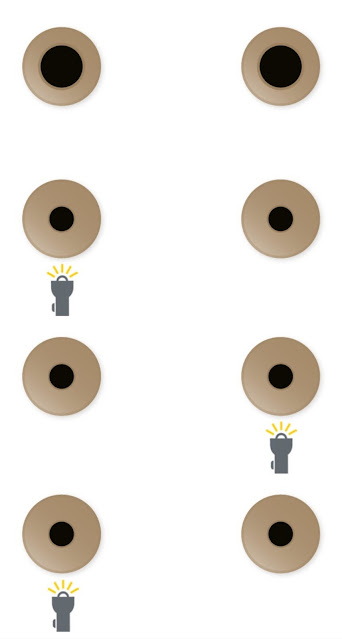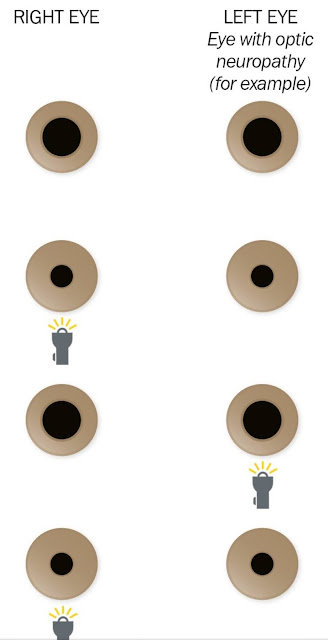RAPD Test | Relative afferent pupillary defect test | Relative afferent pupillary defect examination | Relative afferent pupillary defect causes | Swinging light test |
__________________________________________________
Causes of RAPDs
Common causes of RAPD unilateral optic nerve disorders that can be associated with a RAPD include ischaemic optic neuropathy, optic neuritis, optic nerve compression (orbital tumours or dysthyroid eye disease), trauma, and asymmetric glaucoma. Less common suh causes include infective, infiltrative, carcinomatous, or radiation optic neuropathy. A RAPD is an extremely important localising clinical sign that can be detected by a simple, quick, non-invasive clinical test, provided that the test is performed carefully and correctly.
Swinging-light test - normal (no RAPD) Illumination of either eye induces normal and equal pupil responses in both eyes (consensual responses).
Swinging-light test – left RAPD Illumination of the (more) normal right eye causes both pupils to constrict. When the light is moved to the (more) abnormal left eye (e.g. with optic neuropathy), both pupils dilate (constrict less), the left pupil dilating despite the light being shone directly at it. Returning the light to the (relatively) normal right eye results in constriction of both pupils again.
Swinging-light test: left RAPD + non-reactive left pupil Illumination of the relatively normal right eye causes only right pupil constriction. When the light is moved to the abnormal left eye (e.g. fixed pupil and optic neuropathy), the right pupil dilates (constricts less). Returning the light to the right eye results in constriction of the right pupil again. In this situation it is only necessary to observe the eye with the reactive pupil in order to identify an RAPD.
OPTOMETRY-SHARP VISION
Optometrist



